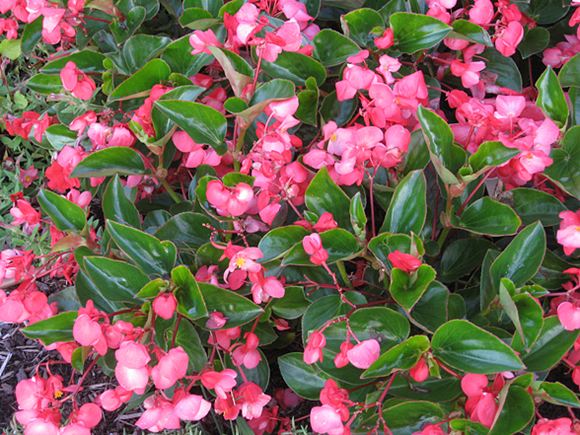
Foliage may be green or bronze/maroon with single or double flowers in pinks, whites and reds.
#Wax begonia water requirements how to
Now that you’ve learned how to grow begonias each year, you can take advantage of this perky plant in the summer landscape. Divide in spring for more outdoor begonia plants. Once inside, keep the soil moist, provide humidity with a pebble tray and place in bright filtered light.Ĭuttings may be propagated for additional plants. Annual begonia plants may be cut back before frost and used inside as a houseplant in winter. The most compact and healthy wax begonias result from deadheading and pinching back regularly. Water wax begonias at the base to avoid leaf spot and the possibility of fungal diseases. A well-draining soil or potting mix simplifies this task. Soil should remain moist, but not too wet.

Watering correctly is important in the care of begonias. Once appropriately placed in the flower bed or hanging basket, deadheading spent blooms and keeping the soil moist is the basis of annual begonia care. Therefore, in areas where summers are exceptionally hot, plant wax begonias where they will get afternoon shade. Full sun locations during hot summer days may stress annual begonia plants, making them susceptible to disease. Plant wax begonias in a full sun to shaded location. Annual begonia plants are also deer resistant, so keep them in mind for trouble spots in the landscape. They can be a focal point when planted in mass and are excellent specimens for container combinations. Known as wax begonias or bedding begonias, annual begonia plants ( Begonia semperflorens) grow quickly, and easily fill in spaces in the garden that will benefit from attractive foliage and frilly flowers. How to Grow Begonias in the Annual Garden

Watering is important in the care of begonias, as is the right location. Annual begonia care is relatively simple when one properly learns how to grow begonias. Annual begonia plants have many uses in the summer garden and beyond.


 0 kommentar(er)
0 kommentar(er)
